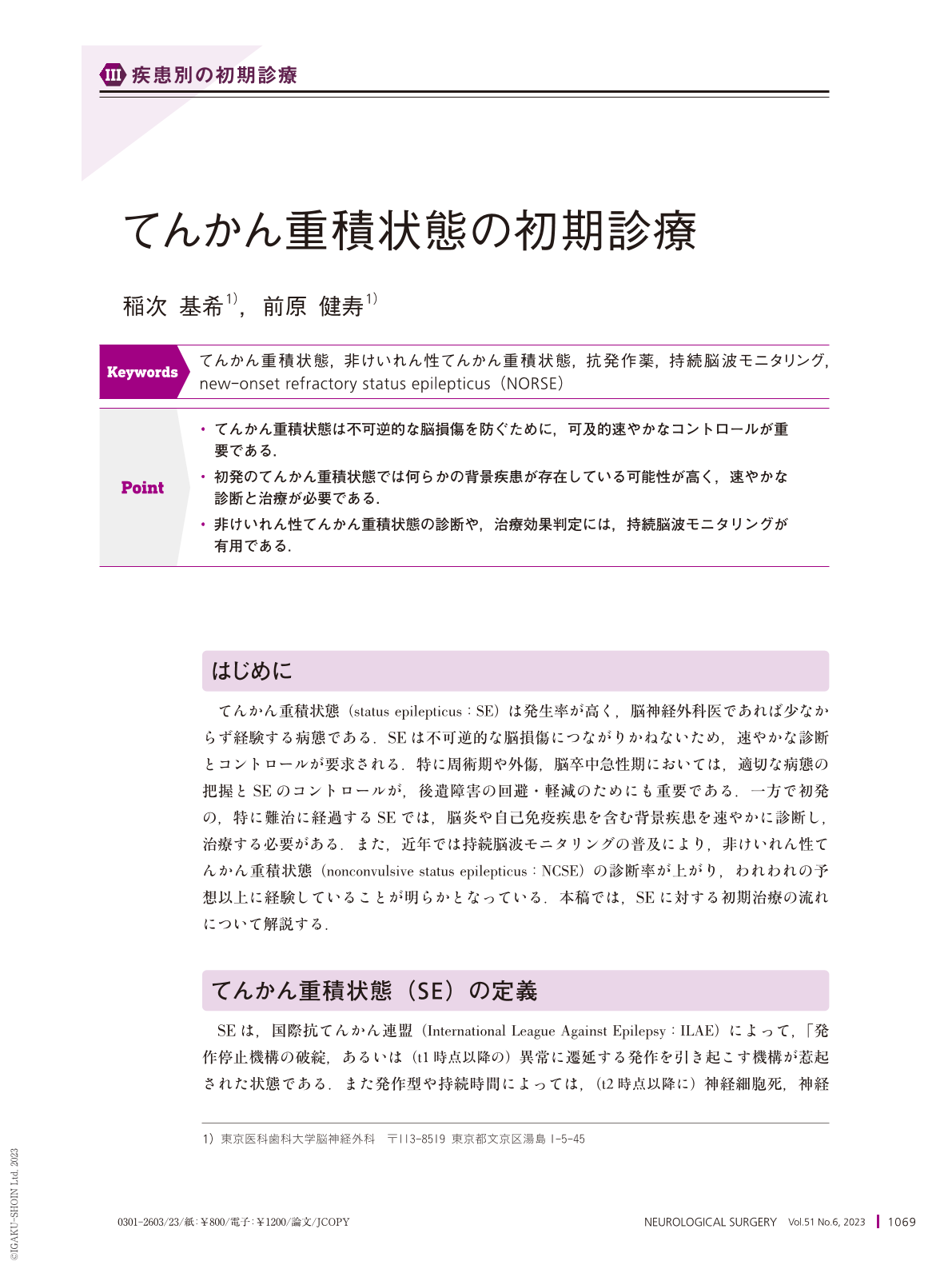Japanese
English
- 有料閲覧
- Abstract 文献概要
- 1ページ目 Look Inside
- 参考文献 Reference
Point
・てんかん重積状態は不可逆的な脳損傷を防ぐために,可及的速やかなコントロールが重要である.
・初発のてんかん重積状態では何らかの背景疾患が存在している可能性が高く,速やかな診断と治療が必要である.
・非けいれん性てんかん重積状態の診断や,治療効果判定には,持続脳波モニタリングが有用である.
Status epilepticus(SE)is defined as a prolonged seizure and is a common neurological emergency with high morbidity and mortality rates. As uncontrolled SE causes irreversible neurological damage, prompt diagnosis and treatment are required. If anti-seizure medications and benzodiazepines, which are initial treatments for SE, are not effective and SE deteriorates to refractory, anesthetic drugs are needed to suppress seizure activity under electroencephalogram(EEG)monitoring. Continuous EEG monitoring is useful not only for evaluating the control of SE but also for diagnosing non-convulsive SE(NCSE)and psychogenic non-epileptic seizures. New-onset refractory status epilepticus is defined as refractory SE in a patient without active epilepsy and without a clear acute or active structural, toxic, or metabolic cause. Because autoimmune encephalitis is the most frequently identified cause, immunotherapy can be attempted in addition to antiepileptic treatment within 2 weeks. Although NCSE is the major cause of unconsciousness, diagnosis is difficult because of uncertain clinical symptoms. Continuous EEG monitoring over 24 h is crucial for diagnosis, although arterial spin labeling-magnetic resonance imaging is alternatively useful. Finally, the building of a multidisciplinary cooperation system is required for prompt diagnosis and intensive treatment for controlling SE.

Copyright © 2023, Igaku-Shoin Ltd. All rights reserved.


